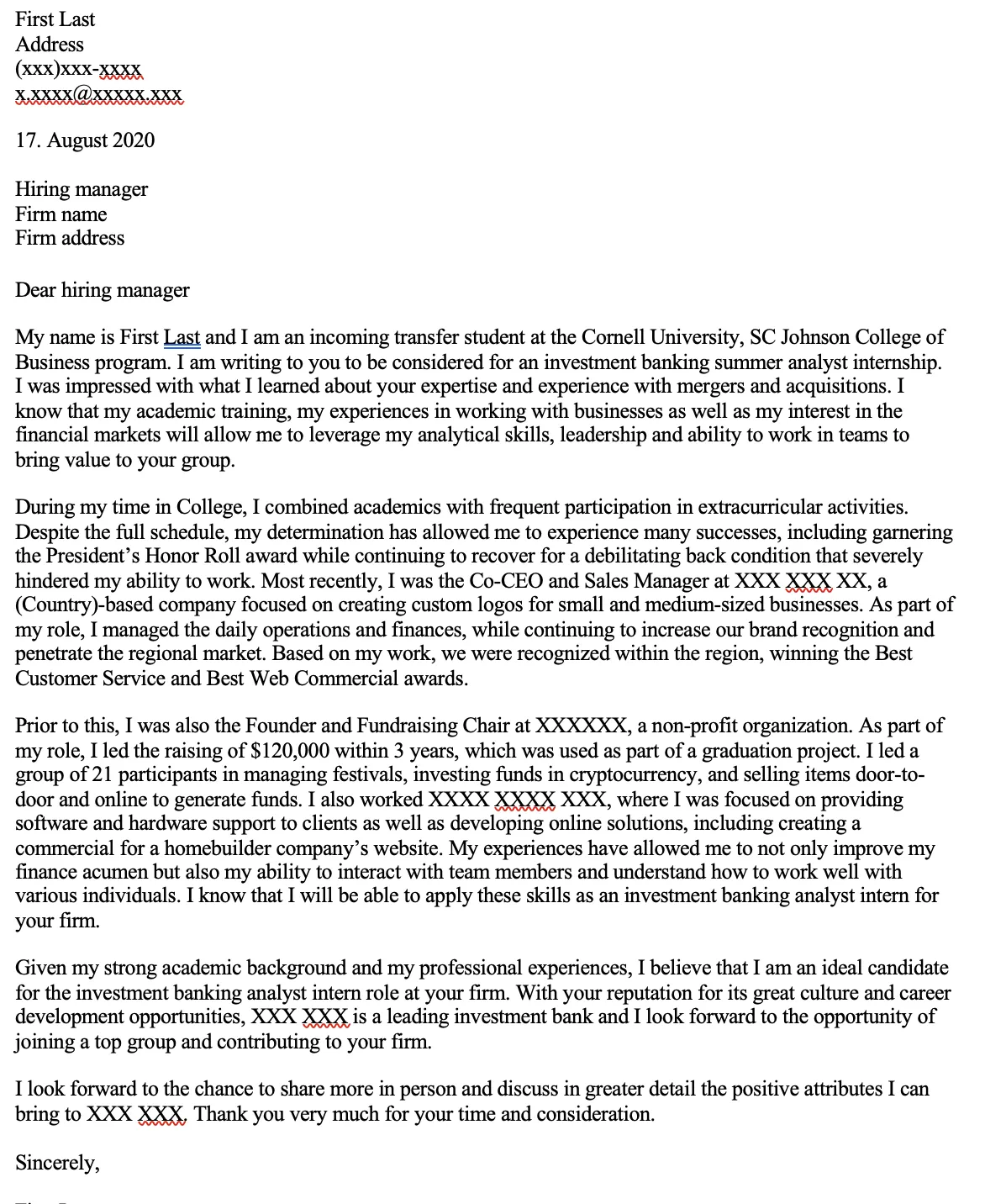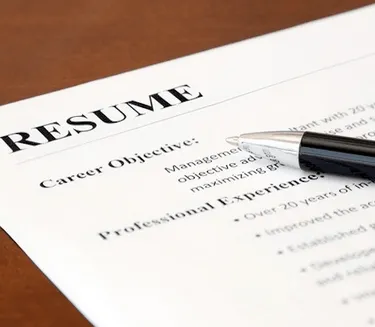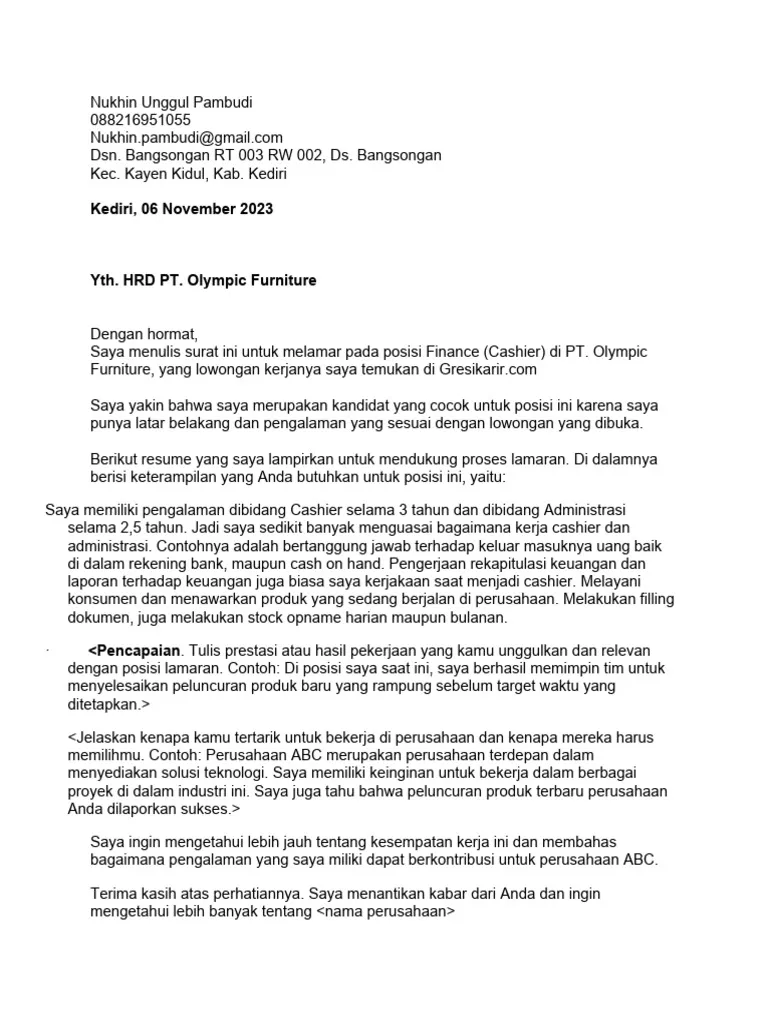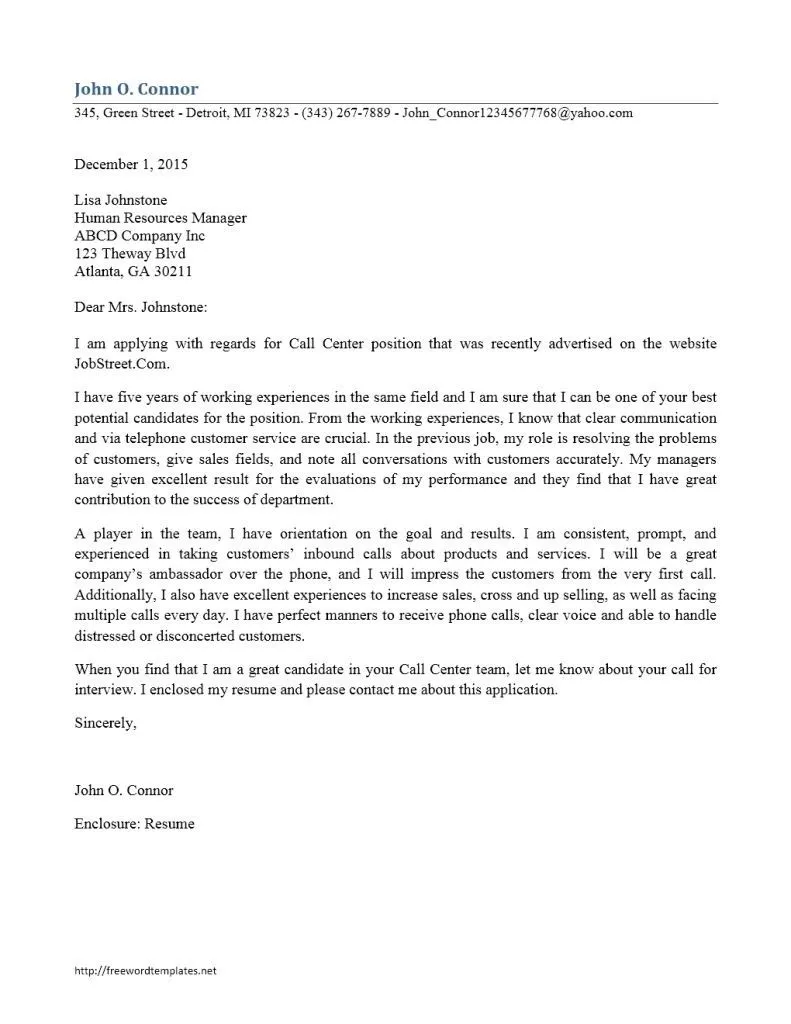Crafting a Winning Wall Street Cover Letter
Breaking into Wall Street is a formidable challenge, and your cover letter is your first handshake, your initial opportunity to impress. A well-crafted cover letter is not merely a formality; it’s a strategic tool that can significantly increase your chances of landing an interview. It should be a compelling narrative that demonstrates your understanding of the industry, showcases your relevant skills, and most importantly, highlights your genuine interest in the specific firm and role. This guide will provide you with secrets and strategies to transform your cover letter into a powerful asset that resonates with hiring managers and sets you apart from the competition. Remember, every word counts in this highly competitive field.
Researching Wall Street Firms
Before you even begin to write, thorough research is crucial. Generic cover letters are easily dismissed. You must demonstrate that you understand the firm’s specific business, its recent activities, and its culture. Visit the firm’s website, read industry news, and explore their social media presence to gather information. Understand their mission, values, and recent accomplishments. Identify specific individuals within the firm, such as the hiring manager or team lead, if possible. Personalizing your cover letter based on this research shows initiative and demonstrates your genuine interest, significantly increasing your chances of grabbing their attention. The more you know, the better you can tailor your application to their needs and expectations.
Understanding Firm Culture and Values

Each Wall Street firm has its own unique culture and set of values. Some firms prioritize innovation, while others emphasize tradition and stability. Some may be more collaborative, while others are highly competitive. Your cover letter should reflect an understanding of these nuances. Mention specific initiatives, values, or programs that resonate with you and align with your own career aspirations. Show that you’ve taken the time to learn about their work environment and how your skills and personality would fit in. Demonstrating this cultural awareness positions you as a candidate who not only possesses the required skills but also understands and appreciates the firm’s ethos. This deepens your connection with the recruiter and makes you a more desirable applicant.
Tailoring Your Cover Letter
A one-size-fits-all approach will not work in the competitive landscape of Wall Street. Tailor your cover letter to each specific job application. This involves more than just changing the company name. Analyze the job description meticulously, and identify the key skills and qualifications the employer is seeking. Then, use your cover letter to highlight how your experience, skills, and accomplishments directly align with those requirements. Every sentence should serve a purpose, demonstrating your ability to meet their needs and contribute to their success. This focused approach shows that you’ve carefully considered the role and are a strong fit, dramatically increasing your chances of securing an interview. Consider it an investment of time to ensure relevance and impact.
Highlighting Relevant Skills and Experience
Your cover letter should showcase the skills and experiences that are most relevant to the position. Instead of simply listing your responsibilities from previous roles, provide specific examples that demonstrate your abilities. Highlight your knowledge of financial modeling, valuation, market analysis, or other relevant technical skills. If you have experience with specific software or tools, be sure to mention them. For example, if the role requires experience with Bloomberg terminals, explicitly state your proficiency. Frame your skills and experiences within the context of the role requirements, emphasizing how you can contribute to the firm’s goals. Remember to back up your claims with tangible evidence of your capabilities. Recruiters are seeking tangible evidence of your abilities to handle the responsibilities of the role.
Quantifying Achievements with Data

Whenever possible, quantify your achievements with data and metrics. Instead of saying you ‘improved efficiency,’ state that you ‘reduced processing time by 15%’. Instead of claiming you ‘increased sales,’ specify by how much. Using data provides concrete evidence of your impact and demonstrates your ability to deliver results. For example, if you worked on a project that saved the company money, specify the amount. If you improved a process that led to greater client satisfaction, provide a percentage. Numbers are compelling and create a stronger impression than vague statements. This approach adds credibility to your claims and shows that you are results-oriented. Data-driven examples speak volumes about your capabilities and effectiveness, making your cover letter more impactful.
Showcasing Your Passion for Finance
Your cover letter is an opportunity to demonstrate your passion for finance. Explain why you are drawn to the industry and what motivates you. Share your interest in specific financial markets, investment strategies, or companies. Mention relevant coursework, certifications, or extracurricular activities. This shows that you are genuinely interested in the field and not just looking for a job. For instance, you could discuss a particular market trend that excites you or an investment strategy you find intriguing. Your enthusiasm will resonate with the hiring manager and make you a more memorable candidate. Demonstrating your passion helps convey a sense of dedication that goes beyond simply fulfilling job requirements.
Demonstrating Industry Knowledge
Demonstrate your understanding of the financial industry by referencing recent market trends, industry news, or specific financial instruments. Show that you’re staying informed about the market. This shows that you are well-versed in the current financial landscape. Discuss any relevant articles you’ve read, events you’ve attended, or industry publications you follow. If you have specific knowledge of the firm’s competitors or their strategies, mention it briefly. By demonstrating your industry knowledge, you position yourself as a candidate who is prepared to contribute from day one. This demonstrates your commitment to staying informed and your ability to engage in meaningful conversations about finance.
Expressing Enthusiasm and Initiative

Your cover letter should convey enthusiasm and initiative. Let the hiring manager know why you’re excited about the opportunity and why you believe you are a strong fit for the role and the firm. Mention your willingness to take on challenges and go the extra mile. Show your eagerness to learn and grow within the company. Be proactive in expressing your interest in a way that is professional and authentic. Avoid generic phrases; instead, express genuine excitement about the specific role and the company’s mission. Your enthusiasm will resonate with the hiring manager and signal your eagerness to contribute. This shows that you are driven and motivated to succeed.
Formatting and Proofreading Your Cover Letter
The presentation of your cover letter is just as important as its content. A well-formatted and error-free document demonstrates professionalism and attention to detail. Use a clean, professional font such as Times New Roman or Arial, and ensure consistent formatting throughout the document. Pay close attention to spacing, margins, and the overall layout. A well-structured cover letter is easy to read and creates a positive first impression. Ensure your contact information is prominently displayed and up-to-date. Double-check the recipient’s name and title to ensure accuracy. Presenting a professional document shows your attention to detail and respect for the recipient’s time.
Choosing the Right Format
Choose a cover letter format that is appropriate for the specific role and your level of experience. A standard business letter format is generally recommended, especially for formal applications. Ensure your letter is well-organized with clear paragraphs and headings to guide the reader. Use concise language and avoid lengthy paragraphs. Break up large blocks of text with bullet points or lists to make your points easier to scan and understand. The format should be visually appealing and easy to read, allowing the hiring manager to quickly grasp your key qualifications and experience. A clear and concise format makes it easy for the reader to find the information they need.
Ensuring Professional Tone and Language

Maintain a professional tone and use appropriate language throughout your cover letter. Avoid slang, jargon, and casual language. Proofread carefully to eliminate any grammatical errors, spelling mistakes, or typos. Use formal titles and address the hiring manager correctly. The tone of your letter should reflect your understanding of the industry and your professionalism. A polished and error-free cover letter demonstrates your respect for the hiring manager and your commitment to excellence. Ensure your language is clear, concise, and professional, projecting a strong and competent image. Pay attention to the tone from the very beginning to the end.
Proofreading for Errors and Typos
Proofreading is an essential step in the cover letter writing process. Even small errors can undermine your credibility. Carefully review your cover letter for any grammatical errors, spelling mistakes, or typos. Use spell-check and grammar-check tools, but don’t rely on them completely. It’s always best to have someone else read your cover letter to provide a fresh perspective. A second pair of eyes can often catch errors that you might miss. Review the document multiple times, paying attention to every detail. Ensure that your name, contact information, and the recipient’s details are accurate. Thorough proofreading is a critical step to ensure that your cover letter is polished and professional.
Addressing the Letter Correctly
Always address your cover letter to a specific person whenever possible. Research the hiring manager’s name and title and address them correctly. If you cannot find the hiring manager’s name, address the letter to the hiring committee or the relevant department. Avoid using generic greetings like “To Whom It May Concern.” Addressing the letter to a specific individual demonstrates that you have done your research and are genuinely interested in the opportunity. It adds a personal touch that can make your cover letter stand out. Use the correct salutation (e.g., “Dear Mr. Smith”) and ensure the spelling of their name is accurate.
Standing Out From the Competition

In a competitive job market like Wall Street, you need to find ways to differentiate yourself. Your cover letter is one of the best opportunities to do this. Personalize your cover letter to the specific job and company, showcasing why you are the ideal candidate. Show your personality and enthusiasm for finance in a way that aligns with the company culture. If possible, include a unique anecdote or a personal story that demonstrates your interest in the industry. Highlight your accomplishments and skills, supporting them with data and metrics. Demonstrating that you possess the right qualifications and personality will make you stand out from a crowded field of applicants.
Personalizing Your Approach
Avoid using a generic cover letter template. Tailor your approach to each specific job and company. Demonstrate that you have researched the company and understand its values and goals. Mention specific projects or initiatives that resonate with you and align with your skills. Show how your skills, experience, and interests match the requirements. Your cover letter should be unique to the specific role and company. A personalized approach shows that you are genuinely interested in the opportunity and have taken the time to understand the company’s needs. Your individual approach will make your letter more memorable and have a better chance of grabbing attention.
Following Up After Submission
After submitting your cover letter and resume, consider following up with the hiring manager or recruiter. Send a brief, polite email a week or two after the application deadline. Reiterate your interest in the role and mention something specific from your research. This shows initiative and demonstrates your continued enthusiasm. Thank the recipient for their time and consideration. Avoid being overly persistent or annoying. A simple, well-timed follow-up can keep you top of mind and increase your chances of getting an interview. Following up shows your continued interest and desire to move forward in the hiring process.
